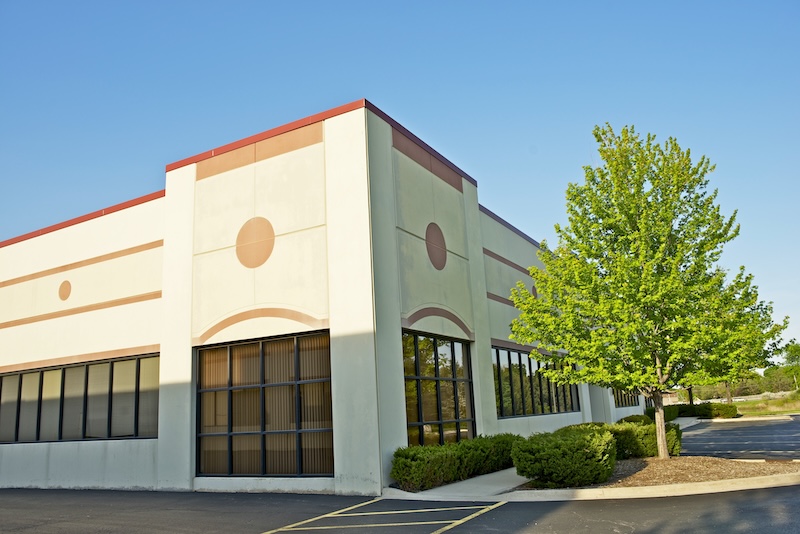CPTED and Smart Cities: Leveraging Technology for Enhanced Design

Learn how thoughtful environmental design and smart city technology work together to strengthen commercial building security. From natural surveillance and access control to AI-powered cameras, mobile surveillance units, and forensic search features, these strategies reduce crime, ease staff workload, and create safer, more welcoming commercial properties.
Have you ever walked into a store, turned down an alley, or strolled along a city block and just…gotten bad vibes?
Maybe the lighting was too dim or the sidewalk was weirdly narrow and covered in trash. Maybe you noticed a blind corner near the exit or a suspicious group of people lurking, looking like they were waiting for something (or someone). Sometimes it’s hard to put your finger on exactly why you feel uneasy in a space, but your brain subconsciously picks up on something and your instincts tell you it’s time to turn around.
Of course those instincts don’t always mean something terrible is about to happen. But sometimes, they’re more than paranoia; your uneasiness may simply be a response to the way an environment is designed.
In this blog, we’ll break down how the built environment influences safety, and how thoughtful design, backed by smart technology, can create safer and more functional commercial spaces.
How Physical Spaces Influence Criminal Behavior
Studies show that crime is more concentrated in places with physical disorder: things like poorly lit parking lots, vacant storefronts, or trash-filled hallways increase risk. On the flip side, when spaces are well-lit and maintained, they reinforce a sense of safety—and even a shared responsibility to maintain that safety.
There are a couple of possible reasons for this. In criminology, the social disorganization theory says that crime tends to thrive in places where people don’t know each other, there’s constant turnover, or no one feels ownership over a space. Closely related is the idea of collective efficacy—the shared belief that a group of people can work together to maintain safety and order.
When garages are dark, buildings neglected, and nobody seems to be paying attention, that collective sense of “we’ve got this” starts to fade.
What Is CPTED?
How do you design commercial properties that feel safe without turning them into intimidating fortresses of barbed wire, armed guards, and security checkpoints at every turn? (Because yes, it’s possible to go so far in the name of security that people actually end up feeling less safe.)
The answer is crime prevention through environmental design—CPTED for short. This philosophy is built on the idea that the way a space is designed can influence how people behave in it.
CPTED for Commercial Building Security
So, CPTED focuses on shaping the environment in ways that naturally reduce the opportunity for crime. For commercial buildings, that can be achieved through:
- Natural surveillance: Storefront windows, open lobbies, and well-lit parking lots make it easy for people to see and be seen. Clear sightlines reduce hiding places, which makes crime less attractive and employees or puts customers, visitors, and tenants at ease.
- Access control: Guide people where you want them to go and discourage entry where they shouldn’t be. Gated lots and clearly marked entrances all help create safe, intuitive pathways.
- Territorial reinforcement: Landscaping, branded signage, and lighting that highlights entryways signal that a space is owned and cared for. That sends two messages at once: to potential offenders, that someone’s paying attention, and to everyone else, that it’s safe to be there.
- Regular maintenance: The broken window theory is real; visible signs of neglect invite more problems. Graffiti, broken locks, and overflowing trash cans signal opportunity, whereas well-kept properties discourage loitering, vandalism, and other unwanted activity.
Smart City Technology and Urban Safety
On their own, CPTED best practices can improve commercial building security. But when paired with smart city technology, they become even more effective.
A “smart city” uses connected technology to make urban environments more efficient, sustainable, and responsive. That can include adaptive traffic systems, energy grids, public Wi-Fi, or waste management that adjusts in real time. Safety is an important piece of the puzzle, too. AI-powered cameras, responsive lighting, motion sensors, and mobile surveillance units extend visibility where traditional infrastructure can’t.
For commercial properties, these same systems strengthen commercial building security by helping prevent unauthorized access, flagging suspicious activities, and giving property managers real-time awareness of what’s happening on their sites.
→ Learn how mobile surveillance units play a part in smart city initiatives.
Smart City Technology for Commercial Building Security
Adopting smart city technology can strengthen security, but also reduce the load on personnel—it’s a double win. Here are a few best practices to consider:
- Deploy mobile surveillance units for flexible, reliable coverage: Unlike traditional systems that require costly installation and wiring, mobile surveillance units can be placed wherever they’re needed and moved as threats change. LVT’s solar-powered units aren’t tied to the grid, so they keep running during outages. Built-in deterrent features like bright lighting and loudspeakers actively prevent unauthorized access and other suspicious activities.
- Filter out noise with AI-powered systems: Traditional cameras and sensors flag every movement—even the harmless ones—and staff can quickly become overwhelmed by false alarms. Agentic AI-powered systems filter out harmless activity and surface only real threats, which helps teams respond faster and waste fewer resources.
- Stop manually scrubbing videos for evidence: Ideally, you want a platform that logs and organizes footage so you don’t have to do it manually. LVT puts the cherry on top with its forensic search feature, which allows you to use keywords (like “blue hoodie” or “red truck”) to find footage of specific things or events.
→ Looking for a solution that does all of the above? Learn more about LVT’s commercial building security systems.
Take the First Step Toward Smarter Security
CPTED provides the foundation for safer environments through thoughtful design, and smart city technology adds the adaptability and intelligence needed to detect, deter, and respond to crime. By combining the two, you’re doing more than hardening the target; you’re fostering safer, more vibrant spaces that support both security and everyday life.
Want to learn how LVT can help you take commercial building security to the next level? Contact our team today for a demo.



